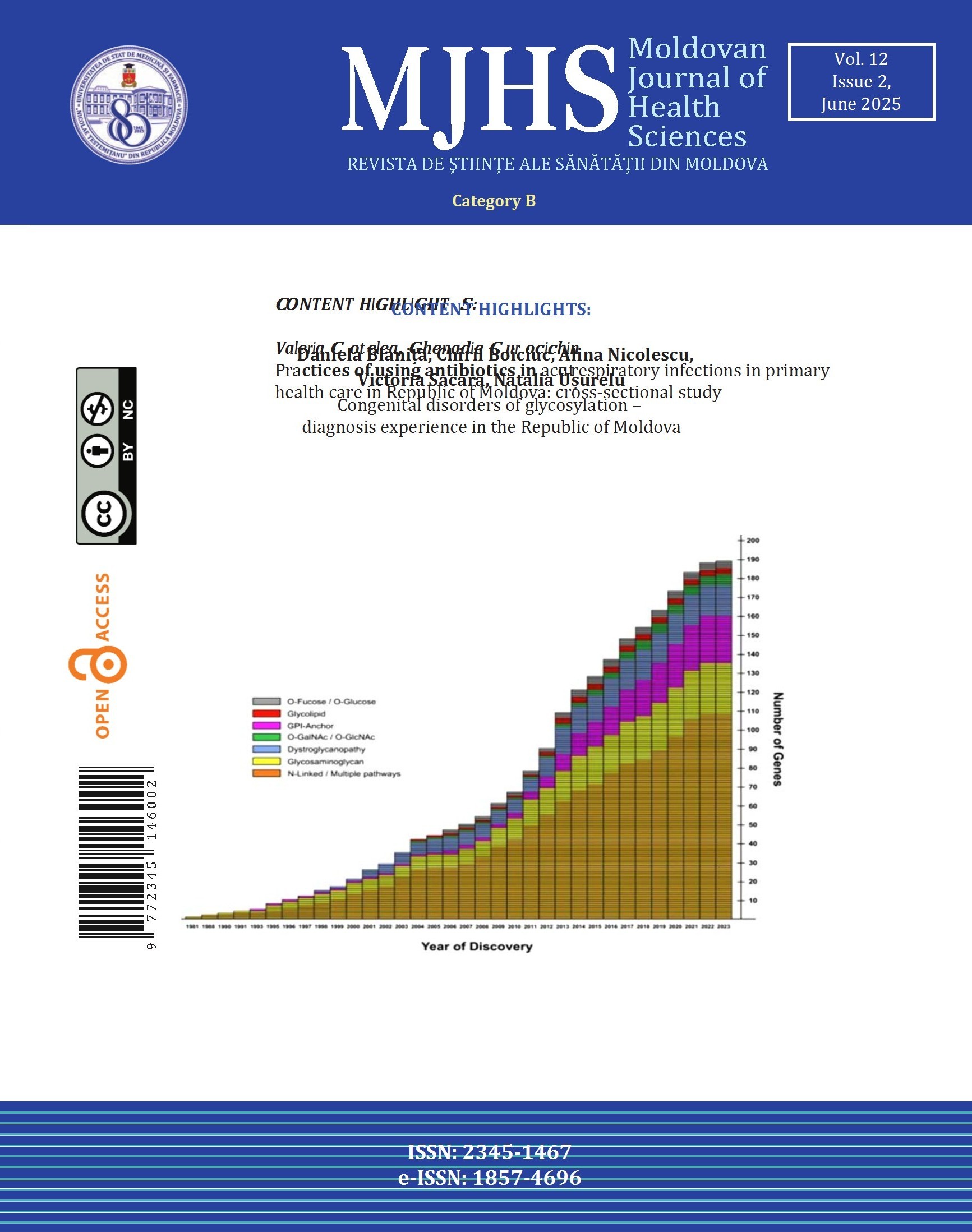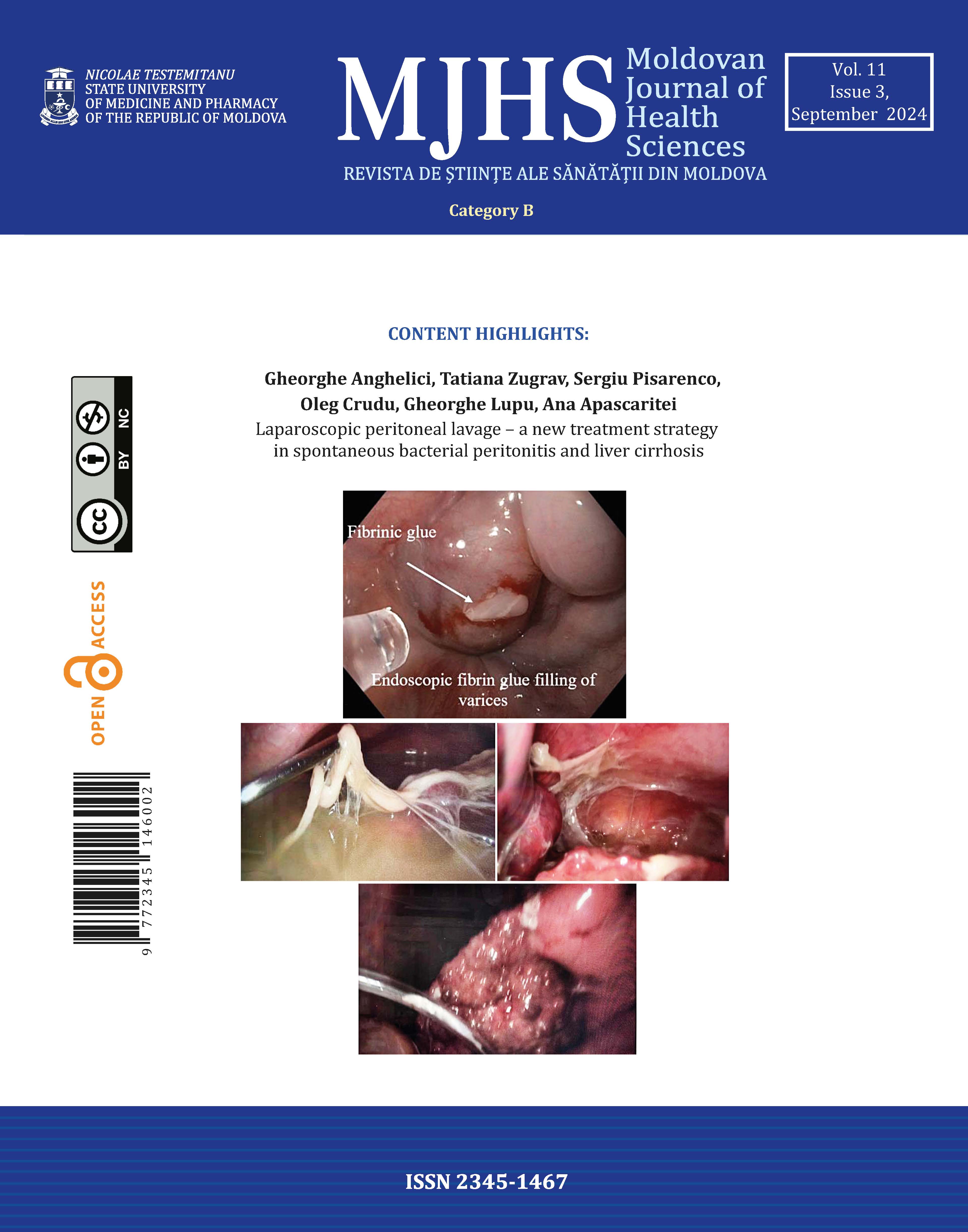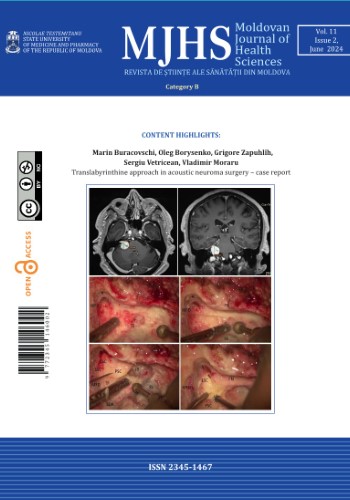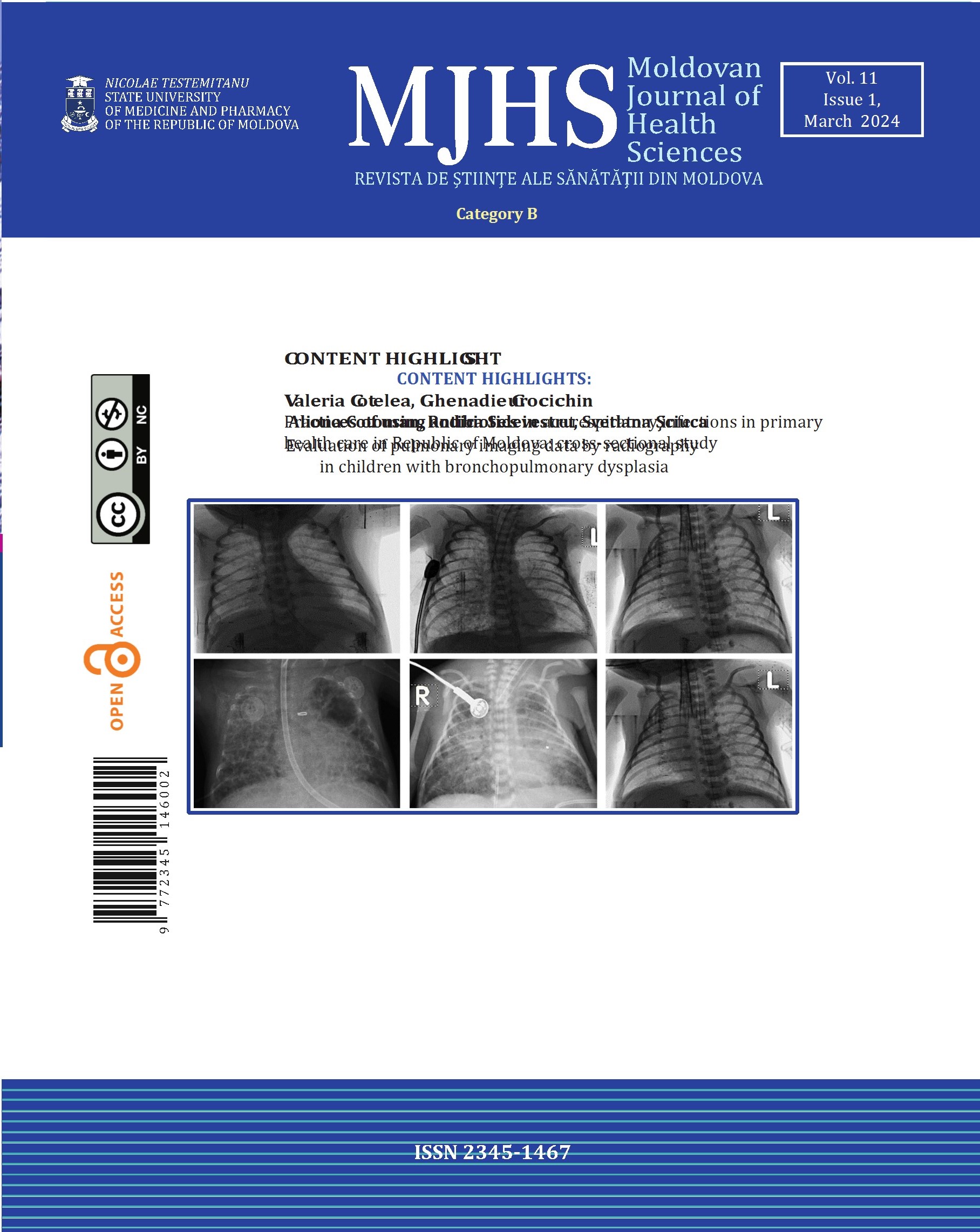Immune and mathematical procedures in early diagnosis of psoriatic and seronegative rheumatoid arthritis
https://doi.org/10.52645/MJHS.2022.4.01
Objectives
Improvement of early diagnosis of psoriatic arthritis based on clinical data, immunological and mathematical research methods.
Material and methods
The study was carried out between 2019 and 2022 at the Rheumatology and Nephrology Discipline, in the arthrology and rheumatology departments of the Timofei Moşneaga Republican Clinical Hospital. To accomplish the tasks set out in the study, 110 patients were examined, including 55 patients with psoriatic arthritis (group I) and 55 patients with rheumatoid arthritis (group II).
Results
The range with the highest probability of psoriatic arthritis for the instrumental index is between 0.54 and 1.86. Of the 55 patients with psoriatic arthritis in 95% of patients clinical, laboratory, immunological and instrumental indices were within the range of the highest probability of the disease, which indicates a fairly high reliability of the mathematical model.
Conclusions
Immune disorders in the early stages of rheumatoid arthritis and psoriatic arthritis are nonspecific and are characterized by an increase in CD16+ (26.2±1.5) and CD29+ (24.8±2.1) in rheumatoid arthritis, which is significantly higher than in psoriatic arthritis CD16+ (22.0±1.3) and CD29+ (17.4±3.2) (p <0.05). A mathematical model of rheumatoid arthritis and psoriatic arthritis has been developed, which serves as an additional way of diagnosing rheumatoid arthritis and early psoriatic arthritis.






